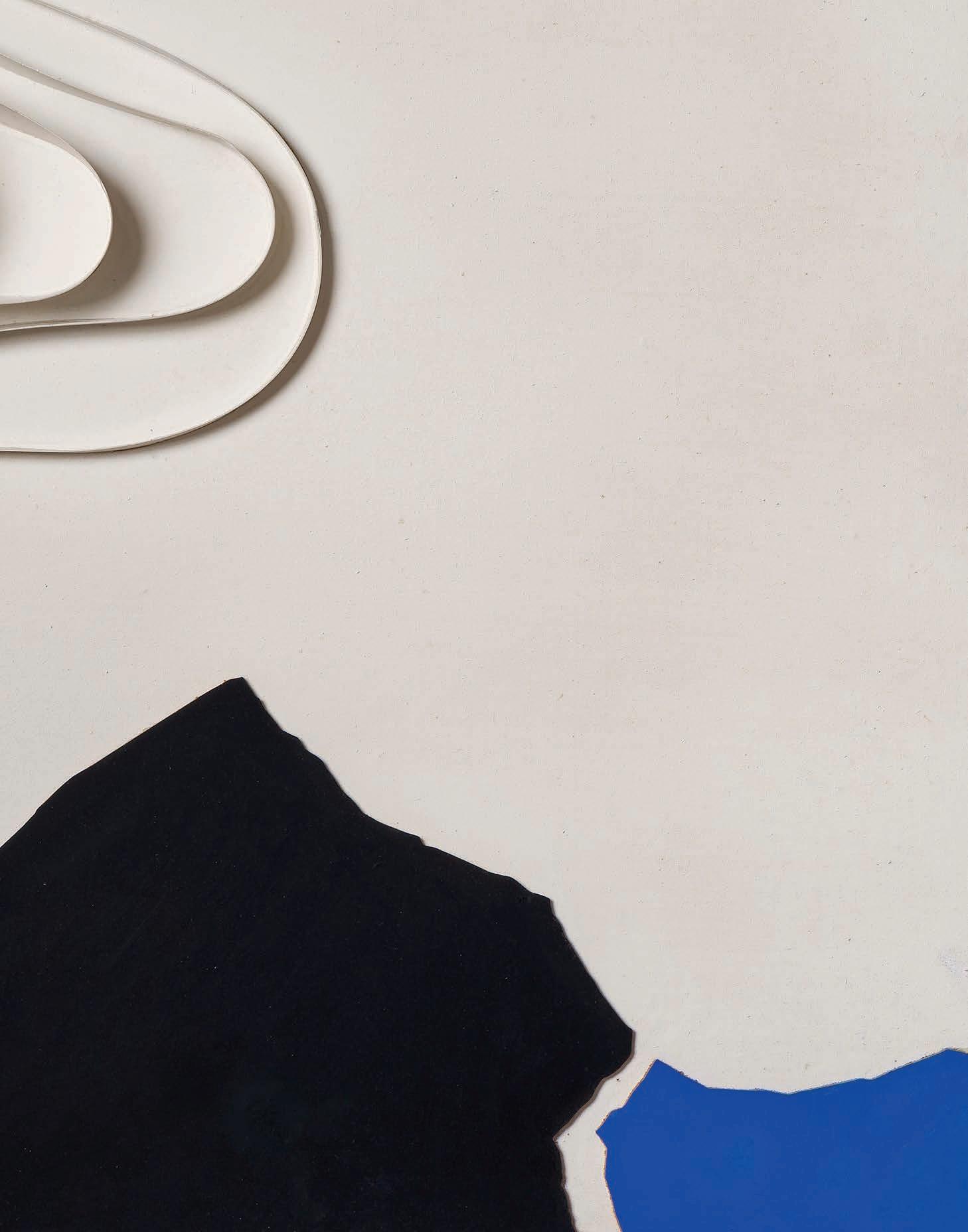
3 minute read
THE FORCE OF COLOUR
THE RETROSPECTIVE DEDICATED TO EDMONDO BACCI AT THE PEGGY GUGGENHEIM COLLECTION LA RETROSPETTIVA DEDICATA A EDMONDO BACCI ALLA COLLEZIONE PEGGY GUGGENHEIM text Francesca Lombardi





HE CAPTURED THE ATTENTION OF PEGGY GUGGENHEIM BY THE NOVELTY OF HIS PAINTING CATTURA L’ATTENZIONE DI PEGGY GUGGENHEIM PER LA PORTATA INNOVATIVA DELLA SUA PITTURA
This summer, the Peggy Guggenheim Collection dedicates an extensive retrospective to Edmondo Bacci, and celebrates Peggy’s talent for discovering artists little considered by art critics but with great potential. With approximately eighty works-many of which have never been exhibited before-including paintings and unpublished drawings on loan from the Archivio Edmondo Bacci, as well as from private collections and international museums, including the Museum of Modern Art in New York and the Palm Springs Art Museum, it will be the first and most comprehensive retrospective dedicated to Venetian artist Edmondo Bacci. Edmondo Bacci. Energy and Light (until 18 September) focuses primarily on the 1950s, the most international moment of his career, when, already an established exponent of Spatialism, he captured the attention of Peggy Guggenheim and leading art critics through the novelty of his painting. The exhibition tells this story through works that are crucial to understanding the evolution of the pictorial language of colour and light that so impressed Guggenheim, as well as Alfred H. Barr Jr, the director of the Museum of Modern Art of New York, who purchased Avvenimento #13R (1953) from the artist. The work, now in the holdings of the New York museum, makes a special return to Italy, where it will be on public view for the first time. The exhibition itinerary starts from the nucleus of canvases, in black and white, entitled Shipyards and Factories, which the artist created between 1945 and 1953, inspired by the blast furnaces of the industrial area of nearby Marghera. Between 1952 and 1953 the frontal, black-and-white space of the early Factories undergoes a major structural change, opening up more and more toward significant chromatic values. It is here that what would be the linguistic characteristics of Bacci’s painting begin to be understood and formed: an abstract painting that progressively eliminated the sign to base itself increasingly on the spatial function of colour. This is followed by the Albe, canvases from 1954, characterized by the definitive break in chromatic planes, evidence of the delicate and highly fascinating path of research that led the artist from the Factories to his celebrated Avvenimenti, made during the 1950s and subsequent 1960s, which are the protagonists of the following rooms. Avvenimenti represent the most poetic, creative and happy nucleus of the artist’s work and the beating heart of the exhibition itself. The exhibition itinerary concludes with a tribute to Bacci’s participation in the XXIX International Art Biennale in Venice, in 1958. Since his first participation, in 1948, the artist had been regularly invited to exhibit at the famous event, but on this occasion an entire room was dedicated to him, now partially recreated for the exhibition at Palazzo Venier dei Leoni.
La Collezione Peggy Guggenheim dedica quest’estate una grande retrospettiva a Edmondo Bacci e celebra il talento di Peggy nella scoperta di artisti poco considerati dalla critica ma con grandi potenzialità. Con un’ottantina di opere, molte delle quali mai esposte prima, tra dipinti e disegni inediti, provenienti dall’Archivio Edmondo Bacci, collezioni private e musei internazionali, tra cui il Museum of Modern Art di New York e l’Art Museum di Palm Springs, si tratta della prima e più esaustiva personale dedicata all’artista veneziano Edmondo Bacci. L’energia della luce (fino al 18 settembre) intende approfondire l’opera di Bacci nel momento più internazionale della sua carriera, gli anni Cinquanta, quando, già affermato negli ambienti espositivi legati allo Spazialismo, viene notato da Peggy Guggenheim ed emerge agli occhi della critica tutta la novità del suo dipingere. L’esposizione propone una serie di opere fondamentali per comprendere l’evoluzione di quel linguaggio del colore-luce che tanto colpì la mecenate americana, nonché Alfred H. Barr Jr, allora direttore del Museum of Modern Art di New York, che acquistò dall’artista Avvenimento #13 R, del 1953. La tela, oggi parte della collezione del museo newyorkese, ritorna eccezionalmente in Italia, per essere esposta per la prima volta al pubblico. Il percorso espositivo prende il via dal nucleo di tele, in bianco e nero, intitolate Cantieri e Fabbriche, che l’artista realizza tra il 1945 e il 1953, ispirate agli altiforni dell’area industriale della vicina Marghera. Tra il 1952 e il 1953 lo spazio frontale e in bianco e nero delle prime Fabbriche subisce un importante mutamento strutturale aprendosi sempre di più̀ verso significative valenze cromatiche. È qui che cominciano a capirsi e formarsi quelle che saranno le caratteristiche linguistiche della pittura di Bacci: una pittura astratta che elimina progressivamente il segno per fondarsi invece, sempre di più, sulla funzione spaziale del colore. Si prosegue con le Albe, tele del 1954, caratterizzate dalla rottura definitiva dei piani cromatici, testimonianza del delicato e quanto mai affascinante percorso di ricerca che conduce l’artista dalle Fabbriche ai suoi celebri Avvenimenti, realizzati nel corso degli anni Cinquanta e i successivi Sessanta, protagonisti delle sale successive. Gli Avvenimenti rappresentano il nucleo più̀ poetico, creativo e felice del lavoro dell’artista e il cuore pulsante della mostra stessa. Il percorso espositivo si conclude con un tributo alla partecipazione di Bacci alla XXIX Biennale Internazionale d’Arte di Venezia, nel 1958. Dalla sua prima partecipazione, nel 1948, l’artista viene regolarmente invitato ad esporre alla celebre manifestazione, ma in questa occasione gli viene dedicata un’intera sala, ricreata ora in parte nella mostra a Palazzo Venier dei Leoni.
Some works in the exhibition:














